-
Wetland preservation is good business
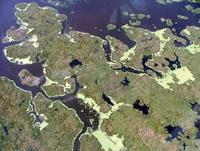
A recently published study is making the case for wetland preservation by highlighting the economic incentives that such preservation could provide to urban centers.Infrastructure investment in urban waterfronts could soon be seen as one of the best economic decisions a city could make. The National Oceanic and Atmospheric Administration says that “$1 million invested in coastal restoration creates 17.1 jobs, compared to just 8.9 jobs for every $1 million invested in oil and gas development.”
-
-
Longer periods of tornado activity are more destructive, but also more predictable
Significant tornado outbreaks, and especially strong tornadoes, are more likely occur within periods of activity lasting three or more days, according to a new study. The study examined thirty years of U.S. weather records and found that an outbreak of twenty or more reported tornadoes had a 74 percent probability of occurring during a period of tornado activity lasting three or more days. During those same periods, a tornado rated 3 or higher on the Enhanced Fujita scale had a 60 percent probability of hitting.
-
-
Oklahoma worries that fracking-induced earthquakes threaten the state’s bridges
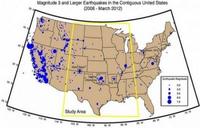
Many residents in Oklahoma are questioning whether hydraulic fracking is to blame for the sudden increase in earthquakes, but for transportation officials, the security of the state’s 6,800 bridges is the immediate concern. There are 468 bridges in Oklahoma which are classified as “structurally deficient,” and most were not built with frequent earthquakes in mind. Earthquakes have become so common, however, that inspectors have had to inspect bridges several times a week.
-
-
Florida moves to protect coastal roads from sea level rise
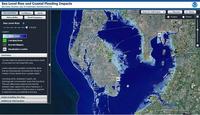
Alton Road is a few blocks west of the Atlantic Ocean, and is Miami Beach’s lowest point, at 2.8 feet above sea level. Trouble is, as a result of sea level rise, inundation tide now routinely reaches 3.4 feet above sea level. Geologist have long warned of the impact sea level rise would have on Florida’s coastal infrastructure, and they view Alto Road as Ground Zero, saying that at some point in the near future, water from flooding will not recede. The Florida Department of Transportation (FDOT) is taking steps to protect coastal transportation infrastructure from sea level rise.
-
-
New York public transit systems preparing for sea-level rise
The Metropolitan Transportation Authority (MTA), which operates many New York state public transit lines, is beginning measures to factor for future sea-level rises within its projected five-year capital plans.Tobey Ritz, chief engineer of capital engineering at Metro-North, said: “It’s not so much for us to pick which study [of sea-level rise] is right, but to look at the entire range [of sea-level rise predictions], look at the time frames that are predicted and then consider when is the right time to act.”
-
-
Intelligent urban planning to drive climate change solutions
A leaked report from the Intergovernmental Panel on Climate Change (IPCC) suggests that intelligent urban planning and investment in public transportation, especially in developing countries, could be the key factors in lower greenhouse gas emissions and reversing the effects of climate change.
-
-
Major step toward stronger encryption technology announced
Researchers the other day announced the first successful trial of Quantum Key Distribution (QKD) technology over a live “lit” fiber network. The trial paves the way for more advanced research into QKD, the next frontier of data encryption technology, which will deliver even greater levels of network security.
-
-
Odds of storm waters overflowing Manhattan seawall up 20-fold, new study says

Maximum water levels in New York harbor during major storms have risen by nearly two and a half feet since the mid-1800s, making the chances of water overtopping the Manhattan seawall now at least twenty times greater than they were 170 years ago, according to a new study. Whereas sea-level rise, which is occurring globally, has raised water levels along New York harbor by nearly a foot and a half since the mid-nineteenth century, the research shows that the maximum height of the city’s “once-in-10-years” storm tide has grown additionally by almost a foot in that same period.
-
-
Dams will not reduce flow of sand to Mississippi River Delta
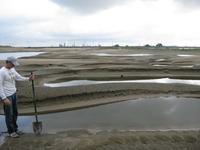
The wetlands of the Mississippi River Delta are slowly sinking and rapidly eroding, but new research has found the river’s supply of sand — the material engineers most need to rebuild the delta — will stay constant for centuries. The new study is encouraging news for scientists and government officials who are working to shore up southeastern Louisiana’s rapidly disappearing wetlands.
-
-
Helping Kansas counties deal with deficient bridges
Seventy-eight of the 105 counties in the state of Kansas have bridges on low-volume rural roads in dire need of repair, replacement, or removal. With an estimated cost of $150,000 per bridge — and nearly 1,000 bridges across the state in the structurally deficient or functionally obsolete categories — replacement bridges are an expensive proposition. A new study offers a way to determine which bridges should be repaired, and which should be closed.
-
-
Dynamic atolls give hope that Pacific Islands can defy sea rise
It is widely predicted that low-lying coral reef islands will drown as a result of sea-level rise, leaving their populations as environmental refugees. New evidence, however, now suggests that these small islands will be more resilient to sea-level rise than we thought. The new findings suggest that, rather than being passive lumps of rock that will be swamped by rising seas and eroded by storms, the islands are dynamic structures that can move and even grow in response to changing seas. Although the islands may survive into the future, the changes could still affect issues like fresh water and agriculture, potentially making life on these islands much more difficult than it is today.
-
-
More, bigger wildfires burning western U.S.
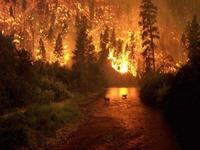
Wildfires across the western United States have been getting bigger and more frequent over the last thirty years — a trend that could continue as climate change causes temperatures to rise and drought to become more severe in the coming decades, according to new research.
-
-
Long-term predictions for Miami sea level rise could be available soon
Researchers say that Miami could know as early as 2020 how high sea levels will rise into the next century. Scientists conclude that sea level rise is one of the most certain consequences of climate change. The speed and long-term height of that rise, however, are unknown. Some researchers believe that sea level rise is accelerating, some suggest the rate is holding steady, while others say it is decelerating. Scientists say that numbers should continue to be crunched every decade, creating more certainty in long-term planning — and helping develop solutions for a changing planet.
-
-
How building codes save homes from cyclones, and how they don’t
During Queensland’s preparations for Severe Tropical Cyclone Ita, Queensland Premier Campbell Newman advised residents who lived in older houses (those built before 1985) to evacuate their homes as they were not likely to stand up to the storm’s destructive winds. That was the year that building regulations changed to require new houses in cyclone-prone areas to be able to withstand higher winds. But how were these regulations determined, what do they mean for modern homes, and why do regulators always seem to wait until after a severe storm before updating the codes?
-
-
West Point wins Cyber Defense Exercise, launches Army Cyber Institute
The U.S. Military Academy at West Point has won the annual Cyber Defense Exercise (CDX) which brought together senior cadets from the five service academies for a 4-day battle to test their cybersecurity skills against the National Security Agency’s (NSA) top information assurance professionals. West Point’s win comes just as the academy announced plans for its Army Cyber Institute(ACI), intended to develop elite cyber troops for the Pentagon.
-
- All
- Regional
- Water
- Biometrics
- Borders/Immig
- Business
- Cybersecurity
- Detection
- Disasters
- Government
- Infrastructure
- International
- Public health
- Public Safety
- Communication interoperabillity
- Emergency services
- Emergency medical services
- Fire
- First response
- IEDs
- Law Enforcement
- Law Enforcement Technology
- Military technology
- Nonlethal weapons
- Nuclear weapons
- Personal protection equipment
- Police
- Notification /alert systems
- Situational awareness
- Weapons systems
- Sci-Tech
- Sector Reports
- Surveillance
- Transportation
Advertising & Marketing: advertise@newswirepubs.com
Editorial: editor@newswirepubs.com
General: info@newswirepubs.com
2010-2011 © News Wire Publications, LLC News Wire Publications, LLC
220 Old Country Road | Suite 200 | Mineola | New York | 11501
Permissions and Policies
Editorial: editor@newswirepubs.com
General: info@newswirepubs.com
2010-2011 © News Wire Publications, LLC News Wire Publications, LLC
220 Old Country Road | Suite 200 | Mineola | New York | 11501
Permissions and Policies
